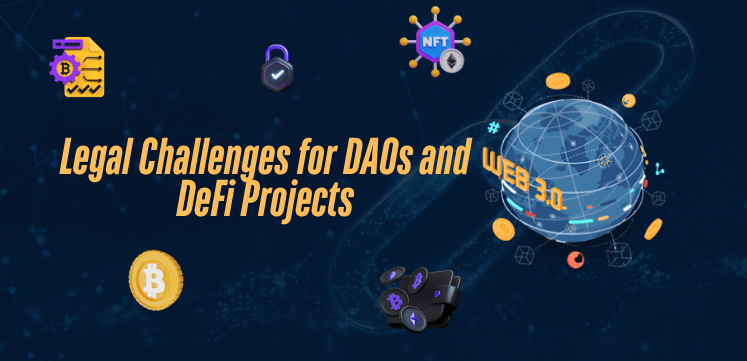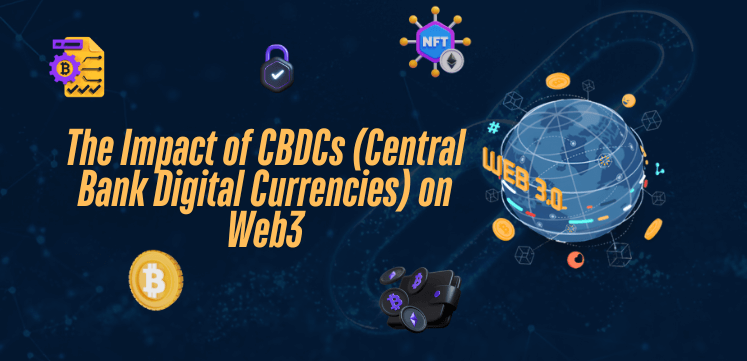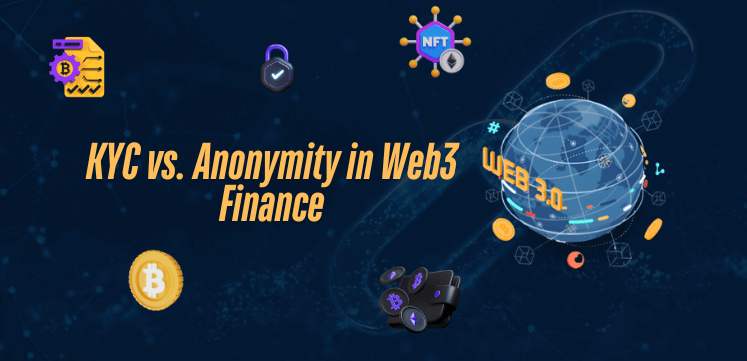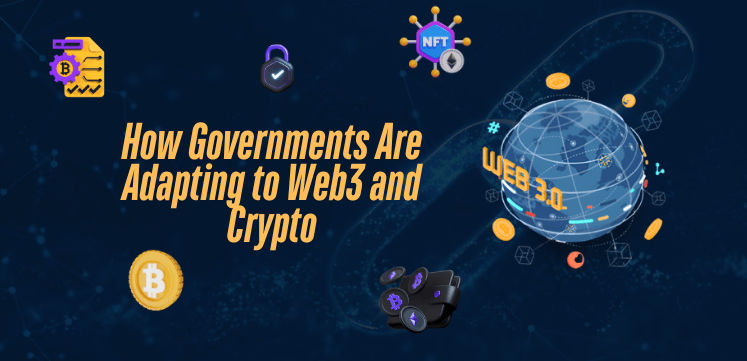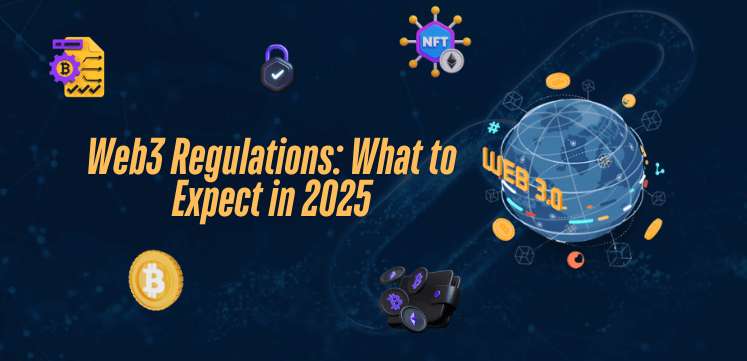What is Web3?
Table of Contents
Introduction to Web3
The internet is undergoing a remarkable transformation, and at its heart lies Web3, the next generation of digital connectivity. For many of us, the internet has become an essential part of daily life, but its current form, dominated by large corporations and centralized control, is about to change dramatically. Web3 represents a fundamental shift in how we interact online, moving away from the corporate-controlled platforms we know today toward a more democratic, user-empowered digital world.
The Journey of Internet Evolution

The story of the internet’s evolution is fascinating, marked by distinct eras that have shaped how we communicate, work, and live. Understanding this journey helps us better appreciate where Web3 is taking us.
The Era of Web1
The first chapter of the internet, known as Web1, emerged in the early 1990s as a revolutionary way to share information. During this period, the internet consisted primarily of static web pages that functioned like digital brochures. Users could only read information, much like browsing through a library of digital documents. Websites were simple, often featuring basic text layouts with minimal graphics, and interaction was limited to clicking through pages of information.
The Rise of Web2
As technology advanced, Web2 emerged in the mid-2000s, bringing with it a social revolution that transformed the internet into the interactive space we know today. This era introduced dynamic content, allowing users to not just consume information but also create and share their own. Social media platforms, online shopping, and cloud services became integral parts of our daily lives. However, this increased functionality came with a hidden cost: our personal data became a valuable commodity, controlled and monetized by large technology companies.
The Dawn of Web3
Web3 marks the beginning of a new chapter in internet history, one that fundamentally reimagines the relationship between users and the digital world. Unlike its predecessors, Web3 is built on the foundation of decentralization, using blockchain technology to create an internet where users truly own their digital presence. This isn’t just a technical upgrade – it’s a complete paradigm shift in how we think about online interaction and digital ownership.
Understanding the Core of Web3
The foundation of Web3 rests on several revolutionary concepts that work together to create a more open and equitable internet. At its heart lies the principle of decentralization, a fundamental shift from the traditional model of centralized control.
Decentralization in Web3 means that instead of relying on large companies to store and manage our data, information is distributed across a network of computers worldwide. This creates a more resilient and democratic system where no single entity has complete control. Imagine a digital world where your online identity, assets, and data belong truly to you, rather than being held in the databases of large corporations.
The blockchain serves as the backbone of this new internet structure. Think of it as a digital ledger that’s infinitely more secure and transparent than traditional record-keeping systems. Every transaction and interaction is recorded in a way that’s both permanent and verifiable, creating an unprecedented level of trust in digital interactions. This technology eliminates the need for intermediaries in many online activities, from financial transactions to digital content creation.
The Technology Driving Web3
At the technical level, Web3 is powered by an impressive array of innovations that work seamlessly together. The most fundamental of these is blockchain technology, but its implementation in Web3 goes far beyond simple cryptocurrency transactions. Smart contracts, for instance, are revolutionizing how we handle agreements and transactions online. These self-executing contracts automatically enforce agreements without the need for intermediaries, making digital interactions more efficient and trustworthy.
Applications and Real-World Uses of Web3
The practical applications of Web3 technology extend far beyond theoretical concepts, touching nearly every aspect of our digital lives. One of the most transformative areas is decentralized finance, commonly known as DeFi. This new financial system operates without traditional banks or financial institutions, allowing people worldwide to access lending, borrowing, and investment opportunities that were previously unavailable to them.
Digital ownership through NFTs (Non-Fungible Tokens) represents another groundbreaking application of Web3 technology. Artists, musicians, and creators can now sell their digital works directly to their audience, establishing true ownership and scarcity in the digital realm. This has opened up new revenue streams for creators and revolutionized how we think about digital property rights.
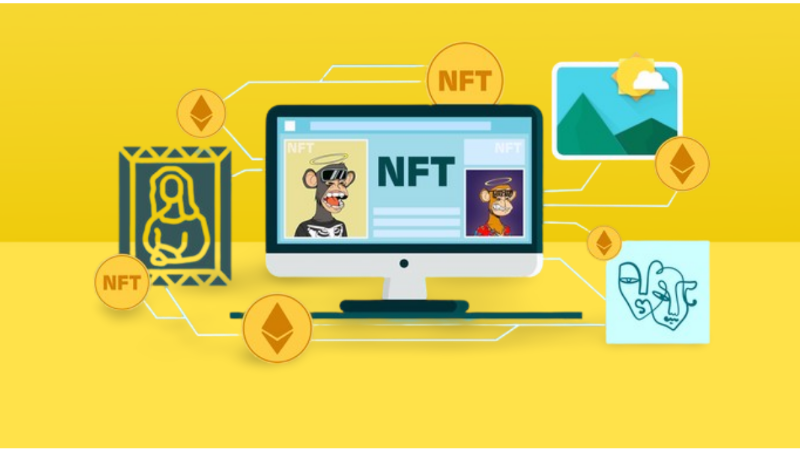
Decentralized Autonomous Organizations (DAOs) demonstrate the potential for new forms of online collaboration and governance. These digital communities operate based on transparent rules encoded in smart contracts, allowing members to participate in decision-making directly. From investment clubs to charitable organizations, DAOs are reshaping how groups organize and manage shared resources.
The Impact on Daily Life
The influence of Web3 on our daily lives is becoming increasingly apparent. Consider how we currently manage our online identities across dozens of different websites and services, each requiring separate login credentials and personal information. Web3 introduces the concept of decentralized identity, where users maintain a single, secure identity that they control completely. This not only enhances privacy but also streamlines our online interactions.
Social interaction in the Web3 era is also undergoing a fundamental transformation. Rather than relying on platforms that monetize our attention and personal data, Web3 social networks are emerging where users own their content and can even earn rewards for their contributions. This shift is creating more authentic and value-driven online communities.
Challenges and Future Prospects
Despite its promising potential, Web3 faces several significant challenges that need to be addressed. One of the most pressing issues is scalability – as more users join these networks, maintaining speed and efficiency while keeping costs reasonable becomes increasingly difficult. Developers worldwide are working on various solutions, from layer-2 scaling solutions to more efficient consensus mechanisms.
User experience remains another crucial challenge. Currently, interacting with Web3 applications requires technical knowledge that many everyday users find daunting. The industry is actively working to create more user-friendly interfaces and simplified processes, making Web3 more accessible to everyone.
Environmental concerns, particularly regarding the energy consumption of some blockchain networks, have also drawn attention. However, the shift toward more energy-efficient consensus mechanisms and the development of sustainable blockchain solutions demonstrates the industry’s commitment to addressing these concerns.
Getting Started with Web3
For newcomers to Web3, the journey begins with understanding and setting up some basic tools. The first essential step is creating a digital wallet, which serves as your gateway to the Web3 ecosystem. Think of it as a combination of your email address and bank account for the decentralized web. Modern wallets are becoming increasingly user-friendly, with intuitive interfaces that make managing digital assets simpler than ever.
Education plays a crucial role in the Web3 journey. Many online communities and learning resources are available to help newcomers understand the technology and its applications. From basic concepts to advanced topics, these resources make the learning process more manageable and enjoyable.
The Future of Web3
Looking ahead, Web3 shows tremendous promise for reshaping our digital world. As technology continues to evolve and mature, we can expect to see more seamless integration between Web3 applications and our daily lives. The development of more efficient protocols, improved user interfaces, and innovative applications will likely accelerate adoption across different sectors.
Security and Privacy Considerations
In the Web3 ecosystem, security and privacy take center stage. Unlike traditional systems where security is often an afterthought, Web3 builds these principles into its foundation. The cryptographic techniques used in blockchain technology provide unprecedented levels of security, while the decentralized nature of these systems eliminates single points of failure that hackers could exploit.
Integration with Existing Systems
The transition to Web3 doesn’t mean completely abandoning current systems and infrastructure. Instead, we’re seeing a gradual integration where Web3 technologies enhance and improve existing platforms. Many traditional businesses are exploring hybrid approaches, incorporating blockchain technology and decentralized features while maintaining familiar user experiences. Banks, for instance, are beginning to offer cryptocurrency services alongside traditional banking, creating a bridge between the old and new financial systems.
This integration extends to enterprise systems as well. Major corporations are implementing private blockchains for supply chain management, document verification, and internal processes. These implementations demonstrate how Web3 technologies can solve real-world business challenges while improving efficiency and transparency.
Economic Implications
The economic impact of Web3 extends far beyond cryptocurrency trading. This technology is creating entirely new economic models based on digital scarcity, programmable value, and community ownership. The concept of “tokenomics” – the economic design of digital tokens – is revolutionizing how we think about value creation and distribution in the digital age.
One of the most significant economic shifts is the emergence of the creator economy in Web3. Content creators, artists, and developers can now monetize their work directly through tokens, NFTs, and community-driven funding models. This removes traditional intermediaries and allows for more direct relationships between creators and their audiences.
The play-to-earn gaming model represents another innovative economic approach. Players can earn real value through their gaming activities, creating new opportunities for people worldwide. This model has already shown significant impact in developing economies, where gaming can provide meaningful income.
The Regulatory Landscape
As Web3 continues to grow, regulatory frameworks are evolving to address this new digital frontier. Different countries are taking varied approaches to regulation, from embracing innovation to implementing strict controls. Understanding these regulations is crucial for anyone looking to participate in the Web3 ecosystem.
The regulatory focus typically centers on several key areas:
- Financial services and cryptocurrency trading
- Consumer protection in digital assets
- Data privacy and security requirements
- Smart contract legality and enforcement
- Cross-border transactions and compliance
Advanced Technologies Powering the Web3 Revolution
The Foundation: Ethereum and Smart Contract Platforms
At the heart of Web3’s technological infrastructure lies Ethereum, a groundbreaking platform that revolutionized blockchain technology by introducing programmable smart contracts. Unlike its predecessor Bitcoin, Ethereum created a complete computing environment that runs on a decentralized network. This innovation opened up countless possibilities for developers and users alike, enabling the creation of complex applications that run without centralized control.
The impact of Ethereum extends far beyond simple transactions. Its programmable nature has spawned an entire ecosystem of decentralized applications, ranging from financial services to digital art platforms. Developers worldwide use Ethereum’s smart contract capabilities to create innovative solutions that were previously impossible in the traditional web environment.
The Bridge Builder: Polkadot and Cross-Chain Communication
While individual blockchain platforms like Ethereum excel at their specific purposes, the need for interconnectivity became apparent as the Web3 ecosystem grew. Polkadot emerged as a solution to this challenge, creating a network where different blockchains can communicate and share information securely. Think of Polkadot as a universal translator between different blockchain languages, enabling them to work together seamlessly.
The concept of blockchain interoperability that Polkadot introduces is crucial for the future of Web3. By allowing specialized blockchains to connect while maintaining their unique features, Polkadot creates a more efficient and scalable ecosystem. This approach solves one of the major challenges in blockchain technology – the ability to scale without sacrificing decentralization or security.
Decentralized Storage: The IPFS Revolution
Storage in the Web3 environment required a complete rethinking of how we store and retrieve digital information. The InterPlanetary File System (IPFS) provides this revolutionary approach to data storage. Instead of relying on centralized servers, IPFS distributes data across a network of nodes, making information more resilient and accessible.
The beauty of IPFS lies in its efficiency and reliability. When you request a file through IPFS, the system retrieves it from the nearest available source rather than a central server that could be thousands of miles away. This not only speeds up access but also ensures that content remains available even if some parts of the network fail.
Understanding Cryptocurrencies in Web3
The role of cryptocurrencies in Web3 extends far beyond their popular perception as speculative assets. These digital tokens serve as the essential fuel that powers the entire Web3 ecosystem. Through native platform tokens, users can participate in network governance, secure the network through staking, and access various services within the ecosystem.
Payment systems in Web3 represent a fundamental shift in how we think about value transfer. Unlike traditional financial systems that require multiple intermediaries and can take days to process transactions, Web3 payments happen almost instantly, regardless of geographical boundaries. This efficiency opens up new possibilities for global commerce and collaboration.
The Power of Smart Contracts
Smart contracts represent one of the most transformative aspects of Web3 technology. These self-executing programs automate agreements and transactions, removing the need for intermediaries and reducing the potential for disputes. Imagine a digital vending machine that not only dispenses products but can also handle complex business logic, all without human intervention.
In practice, smart contracts enable a wide range of applications across different industries. In the financial sector, they automate lending and borrowing processes, making financial services more accessible to people worldwide. Supply chain management benefits from automated payment and verification systems, while digital identity solutions become more secure and privacy-preserving through smart contract technology.
Practical Tips and Best Practices
Success in the Web3 space requires following certain best practices for security and efficient operation. Here’s essential guidance for anyone participating in the Web3 ecosystem:
Digital Asset Management
Securing your digital assets is paramount in Web3. This involves proper wallet management, including secure backup of private keys and seed phrases. It’s crucial to understand that in Web3, you are your own bank – this freedom comes with the responsibility of protecting your assets.
Smart Investment Practices
When exploring Web3 investments, whether in cryptocurrencies, NFTs, or other digital assets, it’s essential to conduct thorough research. Understanding the technology, team, and utility behind any project helps make informed decisions and avoid common pitfalls.
Community Participation
Web3 thrives on community participation. Getting involved in DAOs, contributing to discussions, and participating in governance decisions not only helps you learn but also shapes the future of these platforms.
Emerging Trends and Innovations
The Web3 landscape is constantly evolving, with new innovations emerging regularly. Some exciting developments include:
Cross-Chain Technology
The development of cross-chain bridges and interoperability protocols is making it easier to move assets and information between different blockchain networks. This connectivity is crucial for creating a seamless Web3 experience.
Layer 2 Solutions
These scaling solutions are making Web3 applications more practical for everyday use by reducing costs and increasing transaction speeds. The development of various Layer 2 technologies shows how the ecosystem is adapting to meet growing demands.
AI Integration
The combination of artificial intelligence with Web3 technologies is opening new possibilities. From automated trading systems to personalized user experiences, AI is enhancing the capabilities of decentralized systems.
Social Impact and Sustainability
Web3 has the potential to address various social challenges. Through decentralized systems, previously underserved communities can access financial services, participate in the global digital economy, and have a voice in decision-making processes.
The focus on environmental sustainability is also growing, with many projects adopting eco-friendly approaches to blockchain technology. This includes the development of energy-efficient consensus mechanisms and carbon-neutral blockchain networks.
Future Predictions and Industry Outlook
The future of Web3 appears increasingly promising as we look toward the next decade. Industry experts predict significant growth in adoption across various sectors. The financial sector is likely to see the most immediate impact, with traditional banking services gradually incorporating more decentralized elements. By 2030, experts predict that most people will interact with some form of Web3 technology in their daily lives, whether through digital identity systems, decentralized social media, or financial services.
Case Studies: Web3 Success Stories
DeFi Platform Growth
The story of Uniswap demonstrates how decentralized exchanges have revolutionized trading. Starting from humble beginnings, it now processes billions in trading volume, showing how Web3 can compete with traditional financial institutions.
NFT Marketplace Evolution
OpenSea’s journey from a small platform to a billion-dollar marketplace illustrates the explosive growth potential in the NFT space. This case study shows how digital ownership has created new opportunities for creators and collectors alike.
DAO Implementation
The MakerDAO story showcases how decentralized governance can effectively manage a complex financial system, providing valuable lessons for future DAO implementations.
Resources for Further Learning
Online Learning Platforms
A curated list of trusted platforms offering Web3 education, from beginner to advanced levels. This includes both free and paid resources to suit different learning needs.
Development Resources
For those interested in building Web3 applications, comprehensive guides to development tools, frameworks, and best practices.
Community Forums
Active Web3 communities where learners can connect, share experiences, and get support from experienced members.
Glossary of Essential Terms
An alphabetized list of key Web3 terminology explained in simple language, making it easier for newcomers to understand industry jargon.
A-M
- Blockchain: A distributed digital ledger that records transactions securely
- DAO: Decentralized Autonomous Organization
- DeFi: Decentralized Finance
- Gas Fees: Transaction costs on blockchain networks
- Layer 2: Scaling solutions built on top of existing blockchains
N-Z
- NFT: Non-Fungible Token
- Smart Contract: Self-executing digital agreements
- Token: Digital units of value
- Wallet: Digital tool for storing cryptocurrencies and other digital assets
- Zero-knowledge Proof: Privacy-preserving verification method
Conclusion: The Path Forward
Web3 represents more than just a technological evolution; it’s a fundamental shift in how we interact with the digital world. As we move forward, the key to success lies in balancing innovation with accessibility, ensuring that these powerful new tools remain user-friendly and inclusive.
The journey to Web3 adoption is ongoing, and every participant, from developers to everyday users, plays a crucial role in shaping this new digital frontier. By understanding the fundamentals outlined in this guide, you’re well-equipped to participate in and contribute to the Web3 ecosystem.
